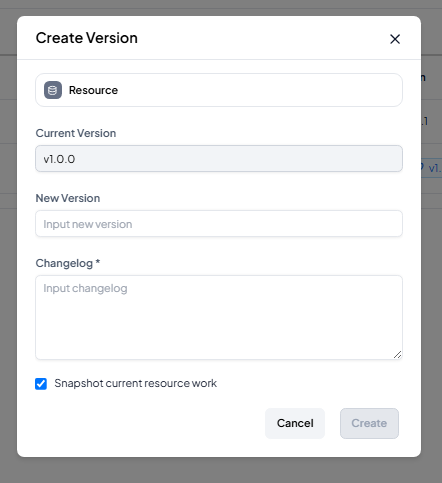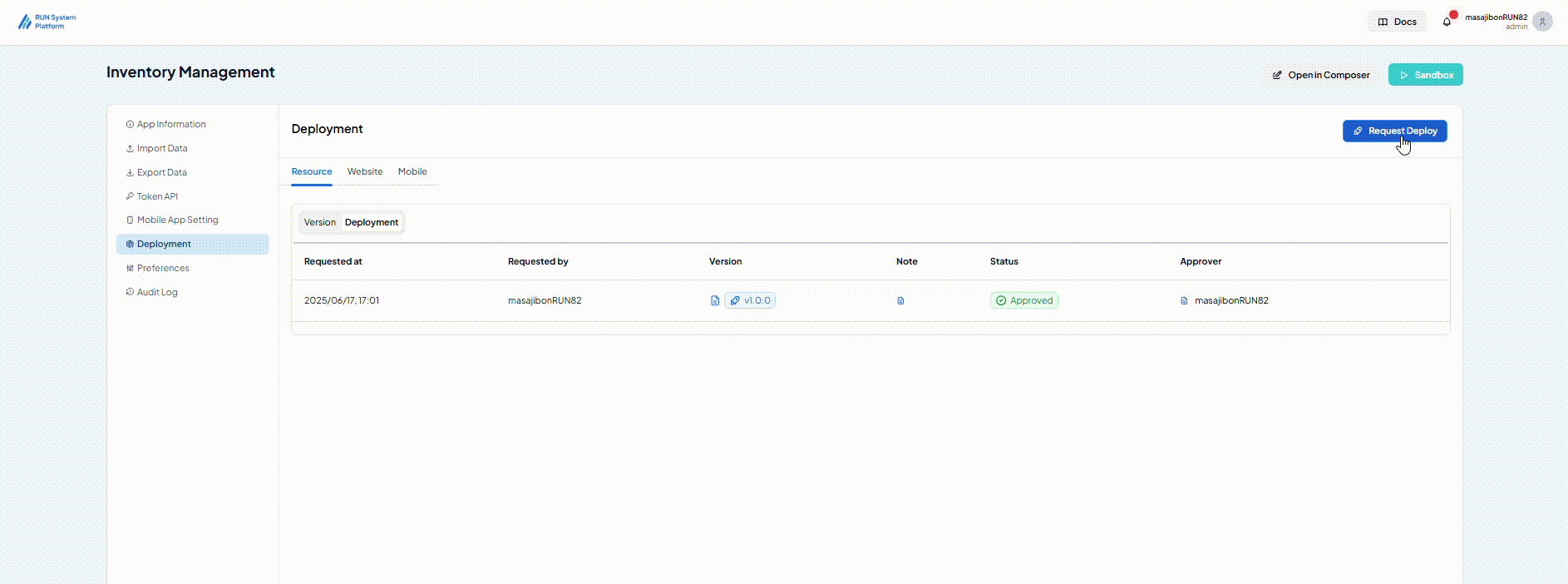Versioning
Understanding Versioning in Application Deployment
Versioning is the process of assigning a unique identifier—typically a version number—to each release of your application. It plays a critical role in deployment by helping teams track changes, manage releases, ensure stability, and allow rollbacks when necessary. Versioning also facilitates better communication between developers, testers, and users about what features or fixes are included in a particular release.
In platforms like RUN Platform, versioning is integrated into the deployment workflow, making it easier for teams to manage releases in a structured way.
How to Use Versioning in RUN Platform
When you're ready to deploy your application in RUN Platform, you can create a new version by following these steps:
- Go to the Settings menu of the application you’ve created.
- Navigate to the Deployment submenu.
- Open the Version tab.
- Click the Create Version button.

This allows you to package the current state of your application with a unique version, which can later be selected during the deployment request process.
Alternatively, if you're initiating a Request Deploy, and you haven’t created a version yet, you’ll see a prompt:
“Haven’t created a version yet? Create now!”
Clicking the "Create now" button will take you directly to the Create Version interface, enabling you to define and register the current version of your app before proceeding with deployment.

Why Versioning Matters in This Workflow
- ✅ Traceability: You’ll know exactly what changes are included in a deployed version.
- ✅ Rollback Support: If issues arise post-deployment, you can revert to a previous version easily.
- ✅ Team Alignment: Developers, QA, and stakeholders can all refer to specific version numbers during discussions or testing.
- ✅ Release Management: Ensures organized and consistent delivery of updates.
Example Scenario
Let’s say you are working on an HR application inside RUN Platform. After completing a new feature—such as an Employee Leave Request module—you create a version labeled v1.2.0. You then use this version in your deployment request. Weeks later, if a bug is discovered in v1.3.0, you can roll back to v1.2.0, ensuring application stability.
Conclusion
Versioning is not just a technical task—it’s a fundamental part of your deployment strategy. By using RUN Platform’s versioning feature, you’re ensuring every release is organized, traceable, and manageable. This brings confidence and control to your development lifecycle.